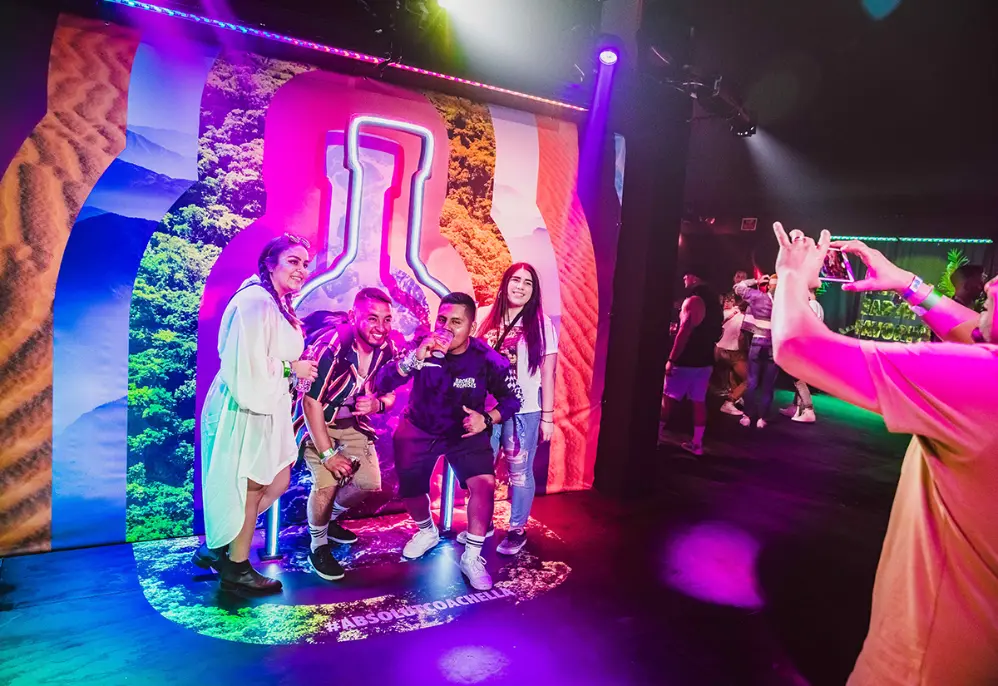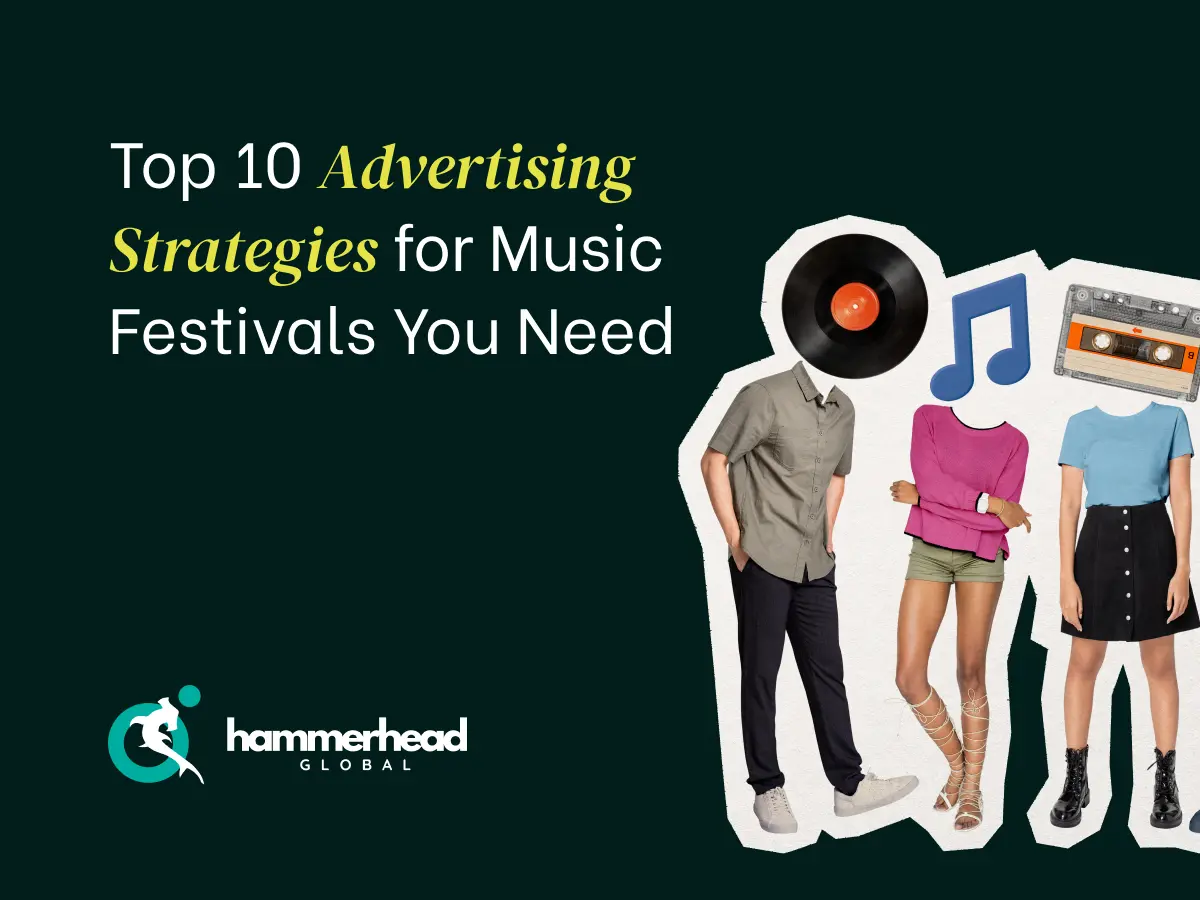Top 10 Advertising Strategies That Rocked Music Festivals in 2024
The world of music festival marketing has evolved rapidly, becoming a vibrant convergence of creativity, digital innovation, and brand storytelling. Today’s music festivals attract hyper-connected, experience-hungry audiences who seek more than just performances; they crave immersive narratives and emotional resonance.
In this dynamic environment, advertising strategies determine not only footfall but also a festival’s cultural cachet. With the rise of real-time content sharing, short attention spans, and algorithm-driven exposure, brand success hinges on meaningful, memorable engagement. This blog explores the Top 10 Advertising Strategies for Music Festivals that have recently transformed how brands connect with festival-goers and influence post-event conversations.
Key Takeaways
- Discover the Top 10 Advertising Strategies for Music Festivals that delivered real impact
- Learn how brands crafted a successful music festival marketing plan
- See why festival advertising now relies on immersive storytelling and cross-platform reach
- Understand how guerrilla marketing and influencer-led campaigns are redefining event promotions
- Get inspired by memorable music festival marketing campaigns and their results
Why Advertising at Music Festivals Matters More Than Ever

As music festivals become massive cultural moments, the potential for brand integration and advertising impact is unparalleled. The rise of Instagrammable stages, branded content zones, and immersive tech activations reflect how festival advertising has matured. Unlike conventional media, music festivals create spaces where brand interactions feel authentic and emotionally resonant.
At Coachella, Absolut Vodka's experiential tent became a share-worthy highlight that boosted their brand affinity among Gen Z attendees.
The Role of Cultural Relevance in Festival Advertising
In a global landscape where every region brings its own identity and preferences, tailoring music festival campaigns to resonate with local culture has become a strategic imperative. From language choices and music genres to visual aesthetics and on-ground activation styles, regional nuances shape how a campaign is perceived and engaged with. Advertising strategies that weave in local traditions, community values, and familiar cultural references see significantly higher engagement and brand recall. For instance, Dubai's Sole DXB integrates local fashion and regional hip-hop culture, creating campaigns that feel deeply embedded in its social fabric.
Measuring ROI and Impact from Festival Campaigns
Beyond the applause and Instagram likes, stakeholders now demand quantifiable results. Brands must root their strategies in concrete metrics; monitoring engagement rates, sentiment trends, conversion ratios, and dwell time at activations. Advanced tools such as RFID tracking, facial recognition analytics, and post-event surveys provide rich data on how campaigns resonate across different segments.
At Tomorrowland, Proximus used RFID wristbands to track user movement and optimize on-site brand touchpoints with impressive ROI reporting.
Foundations of an Effective Music Festival Marketing Plan
Before diving into the best campaigns, it’s crucial to understand the framework behind an impactful music festival marketing strategy. Successful festivals align their promotions with the values, behaviors, and digital habits of their core audience. A strong music festival marketing plan starts with market segmentation, continues with multi-channel activation, and ends with post-event analytics.
Audience-First Strategy
Effective music festival marketing begins with deep audience profiling. Planners leverage social media insights, ticketing data, and behavioral trends to map out personas. This ensures every content asset, partnership, or pop-up feels organic to the target demographic. Glastonbury’s eco-conscious campaign strategy was informed by attendee feedback and boosted sponsor alignment.
Multi-Channel Synchronization
Gone are the days of relying solely on Instagram. Winning strategies combine TikTok teasers, influencer vlogs, email hype loops, Spotify playlists, and even pre-event IRL stunts. A robust music festival marketing strategy harmonizes digital and physical worlds, ensuring no audience segment is left untouched. Lollapalooza's use of multi-platform storytelling, including a dedicated Spotify playlist and backstage IG Lives, amplified their campaign reach significantly.
Post-Event Storytelling
The campaign doesn't end when the music stops. Smart marketers invest in high-quality aftermovies, UGC campaigns, and data-driven reports that amplify their brand's presence long after the event. These efforts contribute to longevity in brand recall and boost engagement for future editions. EDC Las Vegas mastered this with cinematic post-event footage that tripled engagement from the year before.
Top 10 Advertising Strategies for Music Festivals
Music festivals have become cultural powerhouses and prime grounds for inventive marketing. Brands that manage to cut through the noise and grab attention often rely on a mix of bold creativity and tactical precision. In this section, we explore the Top 10 Advertising Strategies for Music Festivals that have left a lasting impact in recent years, helping brands connect meaningfully with audiences in high-energy environments.
Experiential Installations
Immersive brand experiences are no longer optional; they’re expected. Experiential installations at festivals act as branded playgrounds where attendees can touch, feel, and interact with a product or service. At SXSW, the HBO "Westworld" activation turned heads with its life-sized set replica.
Branded Artist Collaborations
Musicians are more than performers, they’re cultural touchpoints. Collaborating with artists offers a dual benefit: credibility and visibility. Adidas and Childish Gambino’s limited release at a festival elevated their streetwear campaign at Camp Flog Gnaw.
Guerrilla Marketing Tactics
Nothing beats the shock factor of surprise. From unexpected flash mobs to branded treasure hunts, guerrilla marketing thrives on spectacle and virality. Heineken's spontaneous light tunnel at Mysteryland became a must-see attraction.
Influencer Collaborations
The influencer economy continues to redefine reach. By enlisting both macro influencers and local micro-influencers, brands gain access to diverse audiences with built-in trust. H&M's influencer-driven booth at Governor's Ball outperformed other activations in engagement rates.
RFID-Enabled Engagement
Smart wristbands embedded with RFID chips transform event experiences. At Austin City Limits, American Express used RFID to let attendees access VIP areas and product previews, improving both experience and conversion metrics.
Customizable Merchandise
Festival-goers love to personalize. Offering live-print stations or customization zones where fans can design their own festival swag creates tangible takeaways. At Burning Man, Levi's DIY denim lab made headlines for its creative branding.
Augmented Reality Campaigns
AR isn’t just a gimmick, it’s a gateway to deeper engagement. Branded AR filters, scavenger hunts, or selfie experiences enhance the festival journey. Coachella's AR-enhanced lineup sparked a massive spike in online engagement.
Eco-Friendly Campaigns
Sustainability sells, especially to Gen Z and Millennials. At Green Man Festival, Patagonia's zero-waste booth offered refill stations and recycled gear bins that resonated with the crowd.
Projection Mapping and Light Shows
Visual storytelling through projection mapping or synchronized light shows elevates brand presence. Absolut's projection art show at Sonar Festival became a highlight on social media.
Interactive Content Walls
Engagement is a two-way street. Digital walls that let users post selfies or share thoughts build community and visibility. At the Firefly Festival, an LED fan-message wall gained 500k+ impressions in just two days.
Leveraging Post-Festival Momentum
While the performances may end, the buzz should not. Music festivals generate enormous emotional energy and cultural relevance, and successful brands know how to extend this resonance far beyond the event dates. This section explores how brands and organizers can sustain relevance and leverage momentum well after the lights go out. From content recaps and email engagement to extended influencer partnerships and smart use of post-event analytics, post-festival marketing is an often overlooked goldmine.
Coachella's long-standing partnership with YouTube extended event visibility weeks after its close, helping sponsors generate continuous content engagement. Similarly, Glastonbury Festival’s collaboration with BBC iPlayer allowed attendees and remote viewers to re-live performances, keeping the conversation alive and creating additional monetization channels.
Trends Reshaping Festival Marketing
New technologies and shifting consumer behaviors are rapidly reshaping the festival marketing landscape. Brands today must not only be reactive to trends but also proactive in leveraging them. In this section, we examine the current forces driving innovation across festival campaigns ranging from immersive storytelling, sustainable brand activations, and AI-assisted personalization to real-time gamification and Web3 integrations. Primavera Sound’s use of AI-curated playlists and real-time recommendation engines for attendees set a new benchmark in audience customization and campaign dynamism.
Additionally, the Tomorrowland digital experience in 2020 showed how festivals could thrive in hybrid formats, combining virtual reality with livestreams and gamified engagement tools that brought global audiences into a shared immersive space.
Conclusion
Advertising at music festivals is not just about visibility; it's about resonance, presence, and shareability. The Top 10 Advertising Strategies for Music Festivals discussed here reflect how brands are moving beyond static promotions to create meaningful, memorable touchpoints. From smart festival marketing strategies and tech-driven guerrilla marketing to cutting-edge outdoor marketing strategies, every campaign serves as a case study in modern engagement.
Major festivals like Coachella, Glastonbury, and Tomorrowland have shown that when brands integrate seamlessly into the festival experience through immersive activations or tech-savvy promotions, they not only enhance attendee experience but also achieve measurable brand uplift. For example, Red Bull’s skate ramp stage at Lollapalooza became one of the most photographed spots, reinforcing brand identity while driving massive organic reach.
As the festival scene becomes increasingly competitive, only those who innovate at the intersection of culture and commerce will truly stand out. The age of passive branding is over; welcome to the era of immersive, experience-first marketing.
FAQs
What are the most effective music festival marketing strategies?
The most effective include influencer-led storytelling, guerrilla activations, and multi-channel synchronisation that integrates physical and digital platforms.
How can brands stand out in a crowded festival space?
Brands that create authentic, immersive experiences through technology, personalization, and social shareability are more likely to stand out.
Are guerrilla marketing strategies still relevant for festivals?
Yes; in fact, their impact has grown due to social media virality. When done right, they can dominate attention and organically amplify reach.
How does influencer collaboration impact festival branding?
Influencer collaborations boost reach, create authentic content, and drive deeper engagement with niche communities, especially when influencers share their behind-the-scenes experiences and exclusive content tied to brand activations.
What are the best platforms to launch a festival marketing campaign?
Instagram, TikTok, and YouTube Shorts remain top choices for launching festival marketing campaigns thanks to their high engagement rates and algorithmic discovery potential. Successful campaigns often repurpose the same core creative across these platforms while tailoring tone and timing.



.svg)
.svg)